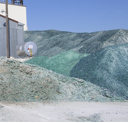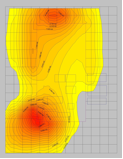Air Dispersion Modeling - Case Study
Air dispersion modeling can be used to predict the concentration of criteria pollutants at specified ground-level receptors around an emission source. |
The air quality impact of stationary sources can be estimated using EPA approved air dispersion models. Dispersion models are used to determine concentrations of pollutants generated from Point, Area and Fugitive sources. Fence line monitoring may be required for long term compliance. Some of the various State and Federal regulations that impact the need for Modeling and provide baseline compliance include:
- State Implementation Plan (SIP) revisions for existing sources
- New Source Review (NSR)
- National Ambient Air Quality Standard (NAAQS)
- Prevention of Significant Deterioration (PSD)
- Clean Air Interstate Rule (CAIR)
- Clean Air Mercury Rule (CAMR)
CleanAir is experienced in the application of EPA-approved models for criteria pollutants. We have been successful providing compliance results using the refined dispersion models, including the EPA preferred AERMOD Modeling System, for point source emissions and fugitive sources. With our expertise in conducting Point Source and Ambient testing and our in-depth understanding of the model inputs and variables, CleanAir can provide a successful modeling system approach.
 |
Fugitive sources can be modeled for to determine compliance with NSPS or NAAQS. |
- Analytical
- Ion Chromatography
- Gas Chromatography
- Gravimetrics
- Ash Resistivity
- Inks/Coatings
- Scrubber Stoichiometry
- Titrations
- Mercury Sorbent Trap
- Engineering
- Express Products
- Rental Instruments
- MET80 Mercury Monitor
- Continuous Emission Monitors
- Gas Sampling Equipment
- Mobile Power Supply
Our Resources
- Technical Resources

Terms of Use
Clean Air Engineering, Inc.
© 2009-2019 Clean Air Engineering,
All Rights Reserved
![]()


Private
Parking Survey

 Express
Express FTIR
FTIR Mercury
Mercury Emission Sampling Equipment
Emission Sampling Equipment Instrument Rental
Instrument Rental
